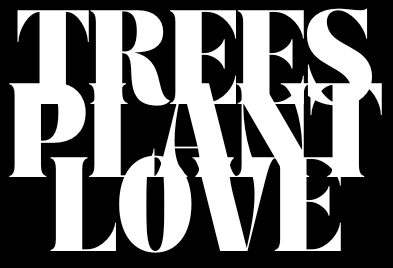
What Types of Wood Are Best for Shutters? Discover the Best Wood Choices for Durable and Stylish Shutters
What Types of Wood Are Best for Shutters?: When choosing wooden shutters for your home, one of the most important factors to consider is the type of wood. The wood you select will directly influence the durability, appearance, and overall performance of your shutters.
With numerous options available, it’s crucial to understand which types of wood are best suited for different needs and styles. In this article, we’ll explore some of the best wood choices for shutters and discuss their characteristics to help you make an informed decision.
Basswood: The Popular Choice
Basswood is one of the most common woods used for shutters, and for good reason. It is lightweight, smooth, and easy to work with, making it ideal for custom designs. Basswood has a fine, even grain that provides a uniform look, and it accepts stains and paints very well, allowing for a variety of finishes. Its soft texture makes it less prone to cracking, and it also offers good insulation properties, helping to regulate the temperature in your home.
Advantages of Basswood:
- Lightweight and easy to handle
- Smooth texture for a sleek finish
- Affordable compared to other hardwoods
- Stains and paints beautifully
Cedar: Known for Its Durability and Aromatic Scent
Cedar is a premium wood choice for shutters because of its natural beauty, exceptional durability, and resistance to moisture. It’s often used in coastal areas or high-humidity environments due to its ability to withstand the elements without warping or rotting.
Cedar also has a unique aromatic scent that can contribute to a fresh, pleasant atmosphere in your home. The wood’s rich reddish-brown color gives shutters a warm, rustic look, making it a favorite for traditional and country-style interiors.
Advantages of Cedar:
- Naturally resistant to moisture, decay, and insects
- Lightweight and durable
- Distinctive, pleasant aroma
- Offers a rustic and timeless aesthetic
Poplar: An Affordable Option with Good Stability
Poplar is an affordable and highly stable wood that is commonly used for shutters. It’s known for its fine texture and smooth grain, which makes it easy to paint or stain. While it may not have the same level of natural beauty as some hardwoods, poplar provides an excellent surface for custom finishes. It’s also a great option for interior shutters since it can be easily shaped to fit various window styles.
Advantages of Poplar:
- Cost-effective and versatile
- Smooth and uniform texture
- Takes paint and stain well
- Highly stable and resistant to warping
Mahogany: A Luxurious and Elegant Choice
If you’re looking for a luxurious, high-end option for your shutters, mahogany is an excellent choice. Known for its rich, reddish-brown color and dense grain, mahogany adds an elegant, sophisticated touch to any room. Mahogany is a durable hardwood that resists warping and cracking, making it ideal for long-lasting shutters. It’s particularly well-suited for both traditional and contemporary designs, adding a premium look to your home.
Advantages of Mahogany:
- Rich, luxurious appearance
- Exceptionally durable and stable
- Resistant to cracking, warping, and swelling
- Adds a high-end touch to your decor
Oak: Classic, Strong, and Long-Lasting
Oak is a classic choice for wooden shutters due to its strength and long-lasting nature. Available in both red and white varieties, oak offers a distinctive grain pattern and a warm, earthy tone that works well with various interior styles. Its hard, dense nature ensures that oak shutters are highly durable and resistant to damage, making them ideal for high-traffic areas or homes in regions with extreme weather conditions.
Advantages of Oak:
- Extremely strong and durable
- Offers a distinctive, elegant grain
- Suitable for both traditional and modern styles
- Highly resistant to damage and wear
Teak: The Ultimate in Durability and Beauty
Teak is a premium hardwood known for its durability, strength, and beauty. It has a unique, golden-brown color that deepens over time, giving it a timeless, rich appearance. Teak is naturally resistant to moisture, decay, and pests, making it an excellent choice for shutters in humid or coastal areas. Due to its durability and stunning look, teak is often used in luxury homes or high-end applications.
Advantages of Teak:
- Incredibly durable and resistant to moisture
- Natural oils make it resistant to pests and decay
- Elegant, timeless appearance
- Ideal for outdoor and coastal environments
Pine: Affordable and Rustic
For those seeking an affordable option with a rustic appeal, pine is a great choice. Pine is a softwood that is relatively lightweight and easy to handle. It has a light, natural color with visible knots and grains, giving it a charming, rustic aesthetic. While it may not be as durable as hardwoods, it can still make for attractive, functional shutters in less demanding environments.
Advantages of Pine:
- Budget-friendly and widely available
- Light color with a rustic charm
- Easy to work with and finish
- Good option for cottage or farmhouse-style homes
Conclusion: Choosing the Right Wood for Your Shutters
The type of wood you select for your shuttersdepends on your specific needs, budget, and aesthetic preferences. Basswood and poplar are great choices for those looking for affordability and easy customization, while hardwoods like mahogany, oak, and teak provide durability and a more luxurious appearance.
Cedar and teak are excellent options for those seeking moisture resistance, making them ideal for coastal or high-humidity environments.
Consider factors such as climate, maintenance requirements, and the overall style of your home when making your decision. No matter which wood you choose, wooden shutters offer a timeless, natural beauty that enhances any space while providing practical benefits like light control, privacy, and energy efficiency.

Leave a Reply